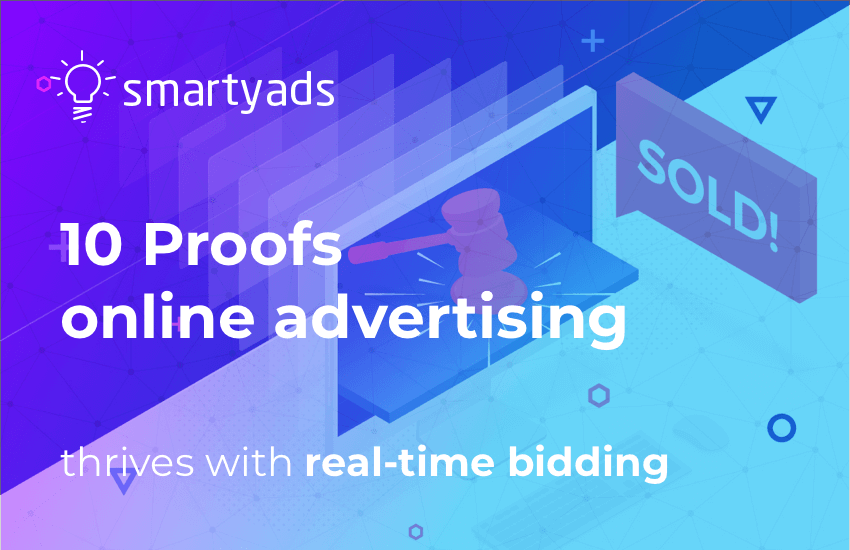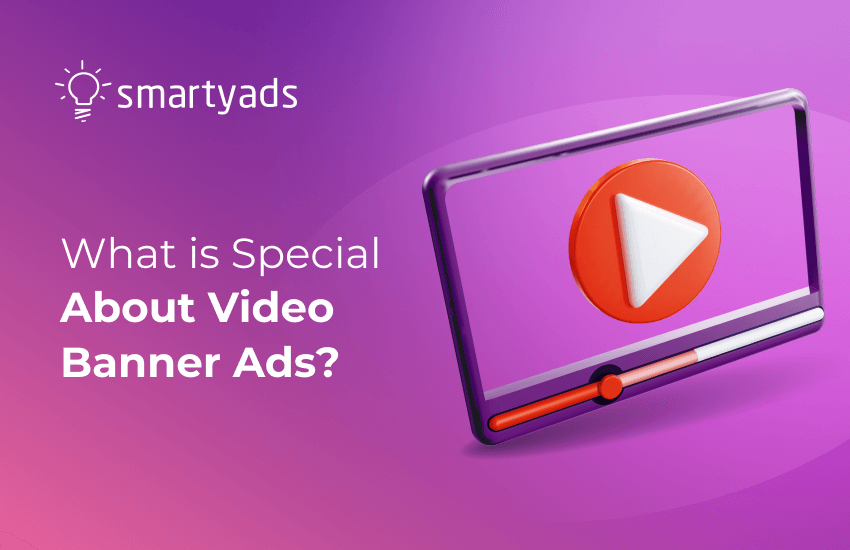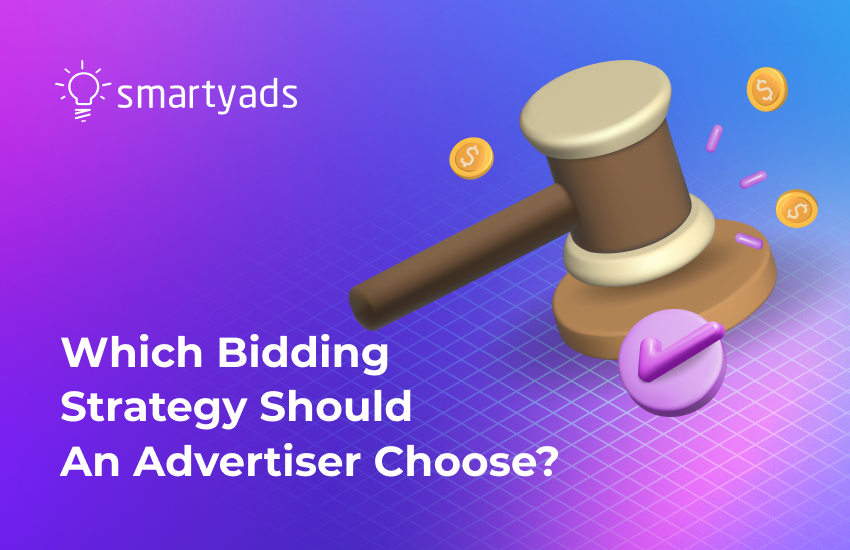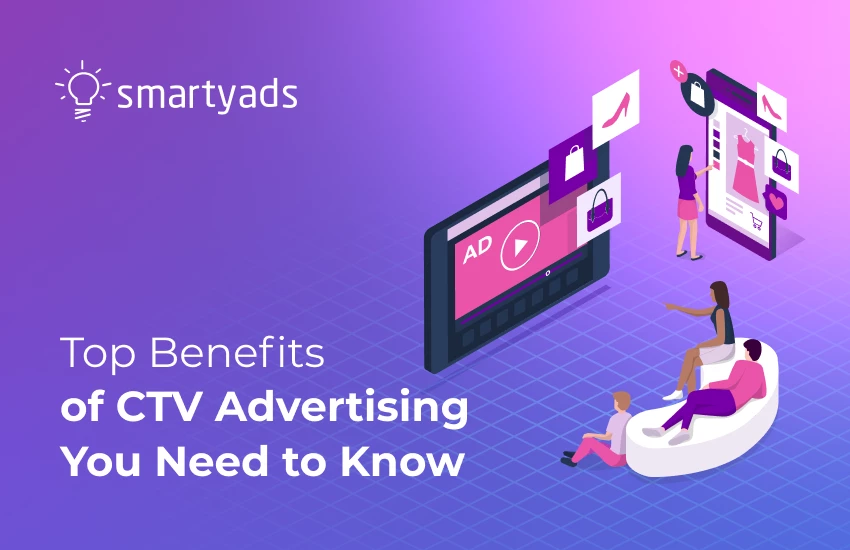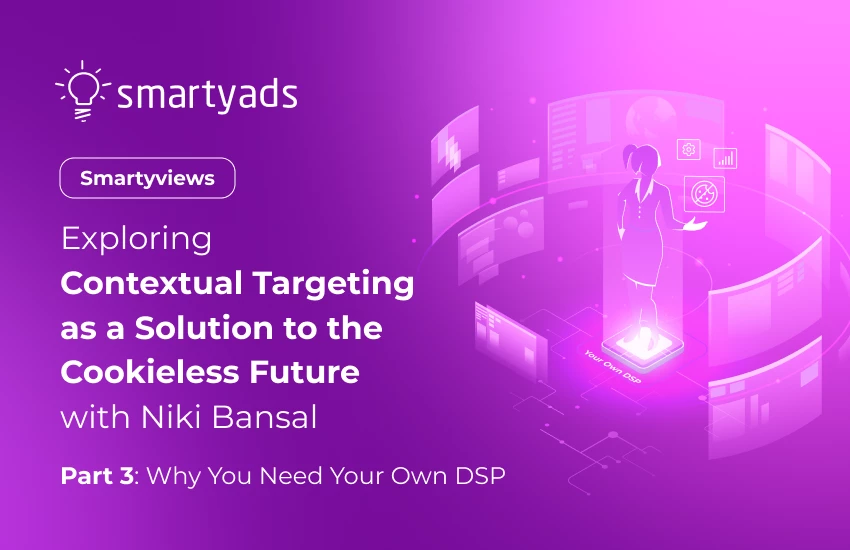Real-time bidding (RTB) is an online advertising concept that is hard to grasp for the programmatic advertising newbie because it might seem like it comprises too many components: from supply-side platform (SSP) and demand-side platform (DSP) to ad exchange (read here what ad exchange is) and ad network, all taking part in the auction, buying and selling ad inventory.
Over the past three years, the sale share of the real-time bidding in advertising has tripled in the US, China, and the UK, according to Statista.com data. The research predicts RTB advertising to hit $29 billion spend by the end of 2025. So, now is just about the right time to give an answer to 'What does RTB mean in advertising?' question and find out how media buyers and sellers benefit from it.
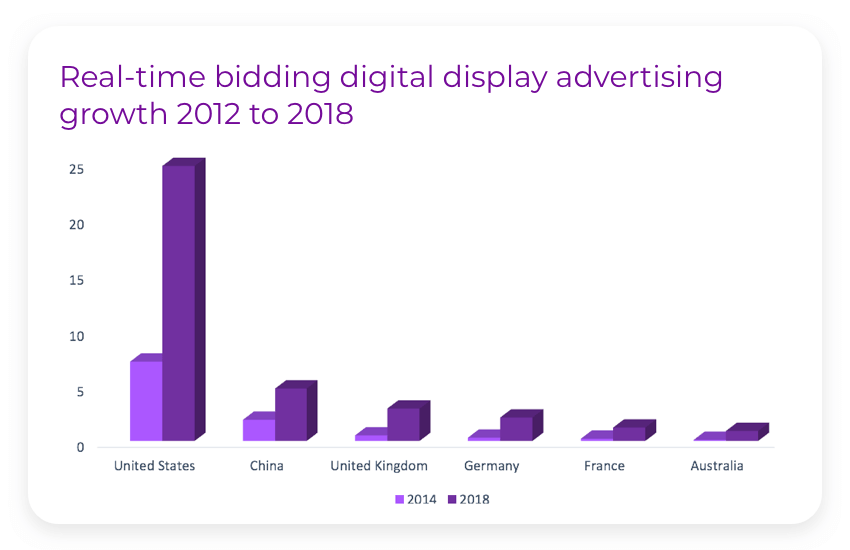
Digital advertising: A retrospective
Compared to traditional media buying, where agencies and publishers negotiate prices, programmatic technology is powered with machine-learning algorithms, and cloud-software platforms that make the process of buying and selling as quickly as it is efficient.
In the 21st century, media buying evolved into an automated process called programmatic. Prior to this, advertisers had to negotiate with dozens of advertising systems about ad placement, the publishers had to look for advertisers to sell their inventory. In general, the advertiser had to take 42 steps before the ad impression was finally served to the user.
Real-time bidding online ads boldly marched into ad tech in order to eliminate human errors, facilitate buying media at a larger scale, reduce the paperwork, and streamline processes.
RTB meaning is different from programmatic concept. RTB merely represents one of the models of programmatic advertising, among which there are also direct ones, as well as non-auction-based, where publishers contact advertisers directly (much more information about the programmatic ecosystem you can find here).
Real-time bidding introduction: unifying everyone
How could be real-time bidding definition wrapped up in simple words? In fact, this is a way of online ad purchasing that is facilitated by real-time bidding auctions. The mechanism behind the RTB auction is the follows: as a user opens the web browser and loads the target page he or she sees the ad banner - the product of the auction between advertisers wishing to serve an ad impression to this user, won by the one who was offering highest bid request. The whole process is automatized and takes no longer than 100 milliseconds to perform. Simple as that.
The whole real-time bidding model can be compared to a universal system that ties together advertisers, publishers, and data providers by the usage of programmatic ecosystem components like DSPs. Using DSP advertisers can buy ad inventory at the lowest price and SSPs (much more information about what SSP is you can find here - Meet SSP: The Very Best Friend of a Digital Publisher) that represent publisher’s interests and help to sell their inventory at the highest price.
Real-time bidding guide for advertisers and marketers
To enter an RTB environment and start participating in dynamic auctions, advertisers should join a demand-side platform. DSP systems simplify the process of ad inventory buying on a large number of advertising exchange platforms allowing the flexible price management for impressions and real-time bidding ad campaign setup. In order to start using DSP, an advertiser or marketer should register at DSP, and then deposit a small fee to the personal account. After this, the campaign can be launched.
Real-time bidding how it works for advertisers inside DSP:
- the demand-side platform allows to optimize ad campaigns;
- set a targeting profile and choose a budget framework;
- choose what kind of target audience has to be reached;
- pick what kind of publisher websites are prioritized;
- mark the ad inventory that should be blacklisted;
- control how much money is to be spent in a day, how many ad impressions must be served and many other custom parameters.
Let’s find out what is an RTB network in deep.
So, on the other side of the programmatic reality, publishers use a software called a supply-side platform. It allows them to manage their digital advertising inventory and connect to demand partners through RTB.
Real-time bidding meaning is complex. In simple words, SSP packs the user data and sends a request to the ad exchange. A bid request sent by the SSP to the ad exchange is like saying, “Hey look, this person has entered my page. Who wants to display advertising here? How much are you ready to pay?”
The publisher’s bid request is actually a code that contains information about the user. In the bid request, the publisher’s SSP specifies the minimum price that will be accepted for this ad impression and the currency in which the transaction will be accepted.
When the bid request lands in the ad exchange, multiple DSPs (much more information about what DSP is you can find here - What is DSP?) start to process it. If the ad impression is valuable and it matches the targeting options and budgeting settings of the advertiser, the DSP would bid on it by sending a bid response through the RTB protocol.
DSPs specify the price that is ready to be paid for the ad impression. The DSP also sends the link to the ad creative in the bid response and mentions its parameters. After the publisher’s SSP collects all the bids responses, it analyzes them and chooses the highest. The following list represents what is a real-time bidding platform in terms of marketing benefits.
So, what is RTB in marketing? 10 proofs it works
- Ad campaigns of any size and budget capabilities: Today RTB is used by various media buyers, from small, local business owners with $100 ad budgets to international, multimillion-dollar companies.
- Exposure to a range of publishers: Through the RTB ecosystem, media buyers connect with a multitude of digital publishers, app developers, and blog and website owners — locally and worldwide. Accessing such a large pool of supply-side platform partners allows choosing the best ad inventory and premium audiences.
- Ad impressions at affordable prices: Marketers optimize their advertising budget by setting price floors and daily or monthly spend limits for a campaign. This way, marketers can always be sure they buy ad impressions that go along with their financial objectives.
- Audience buying: With RTB auctions, marketers actually buy the publisher’s niche audiences thanks to cookie matching. The system uses first- and third-party data to analyze audience segments and build the profile of the target group.
- Reaching the right audiences at the right time and context: Through RTB bidding auctions, marketers deliver consistent messages to the relevant public. It is possible to enhance user visiting, targeting according to their age, gender, social, and marital status, behavior and interests, location, device, etc.
- Eliminating wasted ad impressions: With precise RTB targeting, marketers are able to show ads to people who are interested in their product or service and most likely to perform the desired action (click, call, subscribe, or buy). This way, marketers pay only for impressions that bring value.
- Impression-by-impression purchasing: Rather than buying ad impressions in bulk and never knowing where they will appear and what will be the engagement rate, marketers bid on one impression at a time. DSP analyzes every impression by given parameters and offers a different price for it depending on its value.
- Bid optimization algorithm. Real-time bidding helps to minimize expenditures since it adjusts the bid according to the auction conditions in real time. This helps to win a targeted impression.
- Obtaining real-time actionable data: Over the course of the RTB campaign, marketers can analyze which strategies work and which fail, understand which creative drives the most engagement and which websites are performing better, and receive granular reports and statistics. From such robust data, marketers draw insights into how their real-time bidding campaign performs, and optimize their future campaigns for even better revenues.
- Running multiple real-time bidding campaigns: One DSP connects to a multitude of supply partners: SSPs, ad networks, and ad exchanges. This way, advertisers can access a diversity of supply parties through a single DSP interface running one, two, or more DSP ad campaigns at the same time.
Real-time bidding: how to achieve your goals?
With opportunities presented by real-time bidding, brands, media buyers, and marketers can finally display relevant messages to their target audiences. RTB has revolutionized online advertising, offering the possibility to purchase independently every ad impression rather than paying hundreds of dollars for a pack of a thousand impressions that bring minimum or no real value.
Successful RTB advertising is what SmartyAds specializes in. RTB for us is a universal tool that can help every publisher to sell ad inventory to the most interested media buyer, who is willing to pay the highest price, and guarantee advertisers their ad is served to the right customer at the site with the best traffic quality.
The examples of real-time bidding impeccable performance along with our deep expertise in online advertising allow us to provide our clients with innovative programmatic advertising RTB products that establish the highest effectiveness in ad tech. Our experienced professionals are eager to assist and support you in every stage of growing your RTB marketing campaign, from opening your personal account to tuning and optimizing your existing ad strategy in our system.
